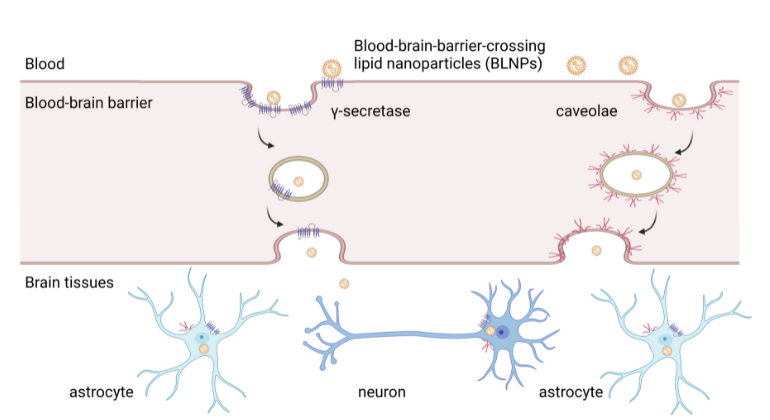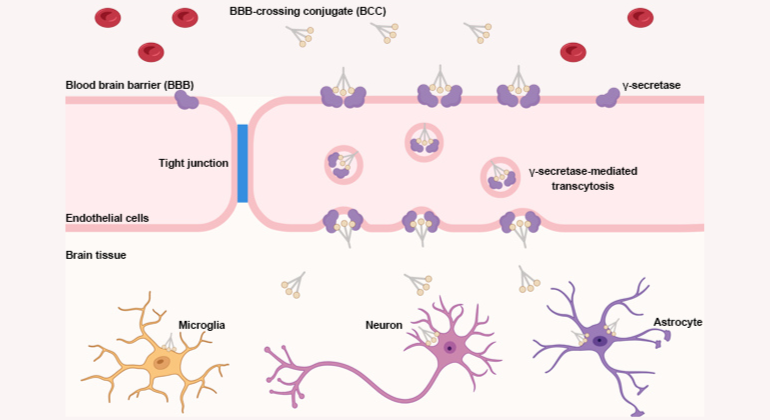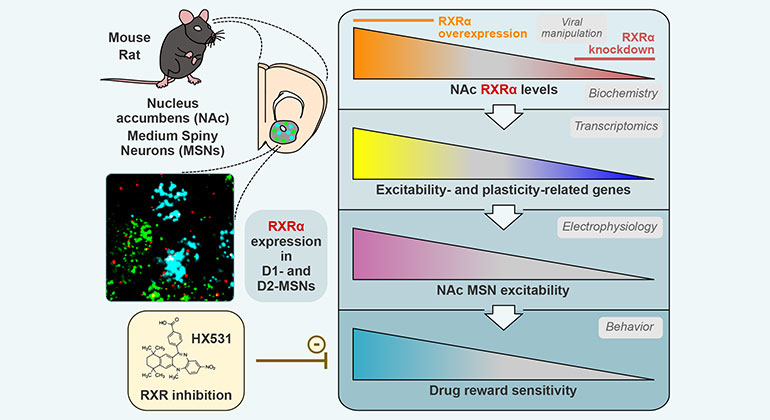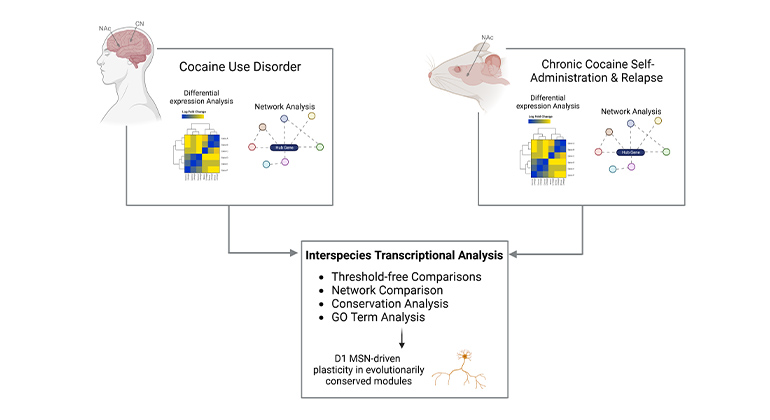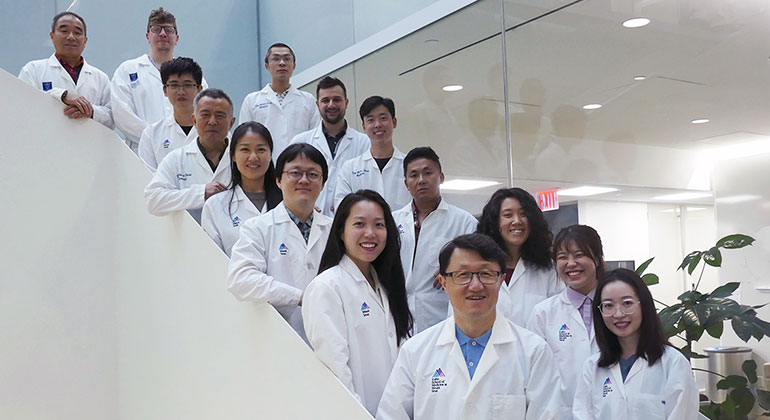Mount Sinai Scientists Discover an Epigenetic Mechanism Contributing to Lifelong Stress Susceptibility

An epigenetic modification that occurs in a major cell type in the brain’s reward circuitry controls how stress early in life increases susceptibility to additional stress in adulthood, researchers at the Icahn School of Medicine at Mount Sinai have learned. In a study in Nature Neuroscience, the team also reported that a small-molecule inhibitor of the enzyme responsible for this modification, currently being developed as an anti-cancer drug, was able to reverse increased vulnerability to lifelong stress in animal models.
“It has long been known that stress exposures throughout life control lifelong susceptibility to subsequent stress. Here we discovered a key molecular mechanism that mediates the lasting effects of that stress,” says lead author Hope Kronman, an MD, PhD student in the Nash Family Department of Neuroscience and The Friedman Brain Institute, Icahn School of Medicine at Mount Sinai. “In so doing, we generated an actionable biological target for treating early-life stress-induced susceptibility, which could open the door to potential clinical investigations of this pharmacological target for controlling stress-associated depressive disorders.”
A lifelong history of stress is the strongest known risk factor for depression in humans. Previous studies have shown that early-life stress increases the risk of adult depression as much as threefold, depending on its timing, intensity, and specific features. Early-life stress is also known to increase the likelihood of behavioral susceptibility to stress later in life, and to have particularly strong effects on the nucleus accumbens, an essential component of the brain’s reward system.
The Mount Sinai study focused on epigenetic modifications within cells; these are chemical changes in the activity of genes that are not triggered by our inherited DNA code, but by molecules that regulate when, where, and to what degree our genetic material is activated. Researchers identified a previously unknown epigenetic mechanism that mediates the lasting effects of early-life stress—a mechanism known as H3K79me2 (demethylation of Lysine 79 of Histone H3) —in the nucleus accumbens. Early-life stress induces this mechanism selectively in D2-type medium spiny neurons of the nucleus accumbens and thereby reprograms the cells to increase vulnerability to a second episode of stress in adulthood.
The discovery of this mechanism involved unbiased approaches of inquiring which epigenetic modification—out of many hundreds—is most likely to mediate the effects of early-life stress in the nucleus accumbens. The researchers used a technique called proteomics to reveal that H3K79me2 is the epigenetic modification most highly regulated by early-life stress in this brain region and, in parallel, used RNA sequencing to show that the most highly regulated epigenetic enzyme is DOT1L, which catalyzes H3K79me2.
The importance of using an unbiased or open-ended approach to identify crucial mechanisms of disease pathophysiology was emphasized by the study’s senior author, Eric J. Nestler, MD, PhD, Director of The Friedman Brain Institute and Nash Family Professor of Neuroscience at the Icahn School of Medicine at Mount Sinai. “Through this approach we were able to uncover the essential role played by this one type of histone modification out of many hundreds in mediating the ability of stress early in life to increase susceptibility to stress and potentially depression over a lifetime.”
Dr. Nestler and his team further showed that manipulation of the enzyme DOT1L in D2 medium spiny neurons of the nucleus accumbens bidirectionally controls stress susceptibility. That is, increasing DOT1L in this cell type increases stress vulnerability in animal models, while decreasing DOT1L has the opposite effect. “Through the use of RNA sequencing we then demonstrated that DOT1L overexpression dramatically recapitulates the gene expression changes that occur from early life stress, whereas DOT1L knockdown dramatically blocks the ability of early life stress to produce gene expression changes,” explains Dr. Nestler.
This investigation set the stage for researchers to test the effect of a selective, small-molecule inhibitor of DOT1L, pinometostat, now in advanced clinical trials for treating acute myeloid leukemia. In the first exploration of the drug’s effect on neuropsychiatric disease models, the Mount Sinai team found that twice-daily injections of the inhibitor reversed the susceptibility-priming effects of early life stress on adult animals, without producing detectable side effects.
“We’re greatly encouraged by these findings which support the possible use of the novel early life stress mechanism we identified for therapeutic purposes,” says Dr. Kronman. “They reveal a fundamentally new pathway for the development of improved treatments for depression, which are urgently needed given that more than one-third of all individuals with this syndrome are inadequately treated with current therapeutics.”
Other partners in the study included the Perelman School of Medicine at the University of Pennsylvania, and the Department of Neurology at Massachusetts General Hospital. The study was supported by grants from the National Institute of Mental Health and the Hope for Depression Research Foundation.
About the Mount Sinai Health System
Mount Sinai Health System is one of the largest academic medical systems in the New York metro area, with 48,000 employees working across seven hospitals, more than 400 outpatient practices, more than 600 research and clinical labs, a school of nursing, and a leading school of medicine and graduate education. Mount Sinai advances health for all people, everywhere, by taking on the most complex health care challenges of our time—discovering and applying new scientific learning and knowledge; developing safer, more effective treatments; educating the next generation of medical leaders and innovators; and supporting local communities by delivering high-quality care to all who need it.
Through the integration of its hospitals, labs, and schools, Mount Sinai offers comprehensive health care solutions from birth through geriatrics, leveraging innovative approaches such as artificial intelligence and informatics while keeping patients’ medical and emotional needs at the center of all treatment. The Health System includes approximately 9,000 primary and specialty care physicians and 10 free-standing joint-venture centers throughout the five boroughs of New York City, Westchester, Long Island, and Florida. Hospitals within the System are consistently ranked by Newsweek’s® “The World’s Best Smart Hospitals, Best in State Hospitals, World Best Hospitals and Best Specialty Hospitals” and by U.S. News & World Report's® “Best Hospitals” and “Best Children’s Hospitals.” The Mount Sinai Hospital is on the U.S. News & World Report® “Best Hospitals” Honor Roll for 2025-2026.
For more information, visit https://www.mountsinai.org or find Mount Sinai on Facebook, Instagram, LinkedIn, X, and YouTube.

Eric J. Nestler, MD, PhD, Wins the 2023 Peter Seeburg Integrative Neuroscience Prize
Oct 30, 2023 View All Press Releases

